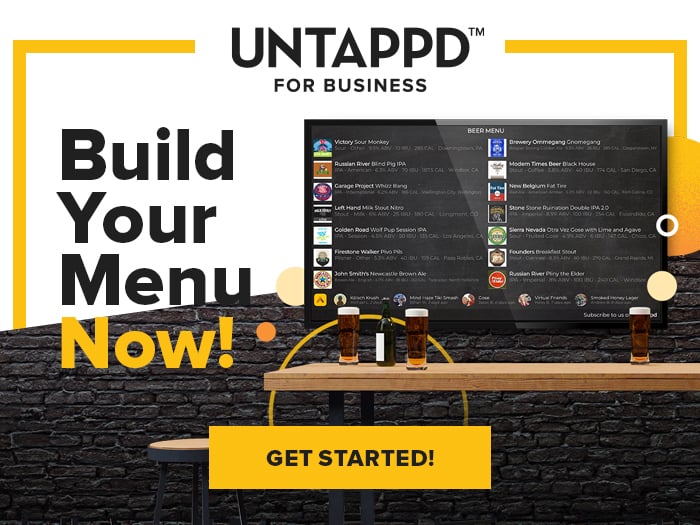A Guide to Corkage Fees

July 6, 2022
There are a number of reasons why your patrons might enjoy bringing their own bottle of wine to your restaurant. Not only is it affordable, but it also enhances their experience.
As a business owner without a liquor license (or even one that has a license but still offers “bring your own bottle”), letting your customers bring their own wine or bottles encourages more traffic through the door. Plus, offering BYOB helps your restaurant’s profit margin so you can focus more on the quality of cuisine and dining experience.
But before popping the cork, make sure you understand how to determine a corkage fee and the proper corkage etiquette. With that in mind, we've compiled a complete corkage fee guide to help you get started.
What We’ll Cover in This Piece:
What Is a Corkage Fee?
Typically, dining establishments that allow customers to bring in their own bottle of alcohol charge what’s called a “corkage fee.” In the simplest of terms, a corkage fee is an expense customers pay for consuming their own alcoholic beverages.
How Much Is a Typical Corkage Fee?
Owners at a variety of different types of restaurants will charge corkage fees, from fine dining establishments to casual neighborhood BYOB joints.
Subsequently, a corkage fee can vary widely. But an average corkage fee typically ranges between $10 to $40 per bottle (or even closer to $100 and above if you’re dining at a pricier place).
A good rule of thumb for determining a corkage fee for your restaurant is to make it at least the same cost as your most affordable bottle.
If you consider your restaurant more of a fine dining experience, consider the higher quality of white glove service your staff performs for customers when determining the corkage fee.
Many restaurants determine their fee by matching it to the same price of their least expensive wine on their menu.
Why Do Restaurants Charge a Corkage Fee?
Charging a corkage fee ensures that those who bring a bottle truly want to spend a special night out. The math simply doesn’t work out for your diners to spend $40 on a corkage fee for a bottle of wine that only costs $10, for example.
So, why do restaurants charge corkage fees?
First, corkage fees reimburse the restaurant for lost sales.
The restaurant industry is a low-margin game, meaning that every little cent counts when it comes to a business owner’s bottom line.
Folks who order wine may be settling in for the night, staying at a table longer than those around them. This means you can’t turn it as fast and start making money on the next check.
Second, you’re supplying a service.
If your establishment offers BYOB, your servers are opening the bottle, setting it up appropriately if it needs to be chilled, bringing over the appropriate glassware, etc. A corkage fee covers those duties.
What Is Included in a Corkage Fee?
A corkage fee covers things like the labor involved in opening wine and the cost associated with storing wine for a short duration. As an establishment, you may also charge a representative to pick out the wine or champagne that the customer would like at a wine tasting.
The fees may cover:
- Use of wine buckets, stemware, and recycling fee for the bottle.
- The restaurant’s investment in their own efforts related to curating a wine list, keeping a sommelier on staff, and training staff on their wine selection.
- Profit loss from not purchasing the restaurant’s wine.
Top 5 Corkage Fee Courtesies
Consider the following courtesies as a good road map for helping customers navigate your restaurant's corkage policies:
Make It Clear That Your Restaurant Is BYOB
If you’re a BYOB establishment, make sure you have prominent messaging on your website and socials for customers to see. Show your corkage fee up front, what it includes, and how customers should bring the bottle into the restaurant. (No paper bags!)
Educate Staff on Your Restaurant's Corkage Policy
Your team should be able to recall this upon table service or over the phone taking reservations. Be sure you teach your staff all of the basics on your restaurant’s BYOB policy and the cost of the corkage fee and what it includes.
Provide Chilling and Decanting Services
Have clear messaging on how your dining establishment handles chilling bottles of sparkling wine, sauvignon blanc, or other wines that need to be pre-chilled. You want to ensure that these types of bottles are ready to drink upon arrival versus sitting at room temperature on ice. If customers have a unique bottle that needs decanting, offer to let them drop the bottle off in advance.
Consult Your Menu for Wine and Food Pairings
This may sound obvious, but be sure that as a BYOB restaurant your menu offerings go well with common red and white wines. Think charcuterie plates of smoked meats and salty cheeses, stuffed grape leaves, tapenade, and hummus. Don’t forget sweet bites like fruit and chocolate, too!
Encourage Tipping
Like most dining experiences, offering BYOB also includes customary tips for your service. Remind your guests on your website or menu that the corkage fee goes to the house. Guests should consider tipping on the same basis they would with any other meal or beverage service at the recommended fifteen to twenty percent.
Understand Corkage Fee Laws
Before you activate your BYOB status and start charging corkage fees, be advised that each state has different stances on the matter.
For example, in Arizona, Colorado, New Mexico, Illinois, and Massachusetts, it is illegal for people to bring alcoholic beverages into a restaurant. In some cases, restaurants could actually lose their liquor licenses if they offer BYOB in these states.
Read up on your state’s local laws concerning liquor or beer and wine licenses before offering BYOB or a corkage fee.
You should always consult with your attorney or another relevant advisor to confirm and understand the exact laws in your area.
Thirsty For More Way To Improve Beverage and Beer Sales?
Untappd for Business can help increase your revenue while providing powerful insight and analytics about what your guests are drinking locally.
Get started by scheduling a demo with one of our experts or start a free 7 day trial - no credit card required!
